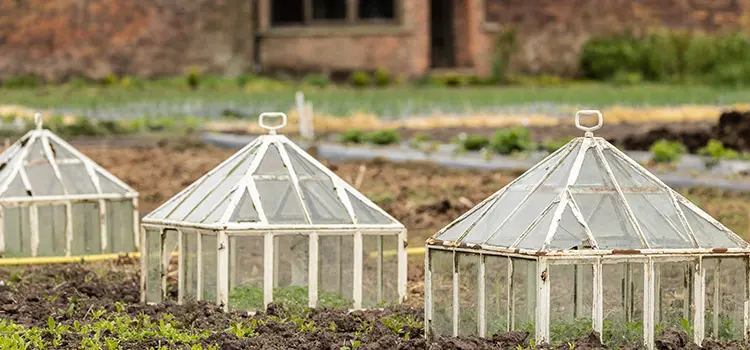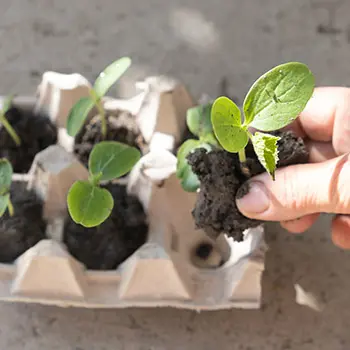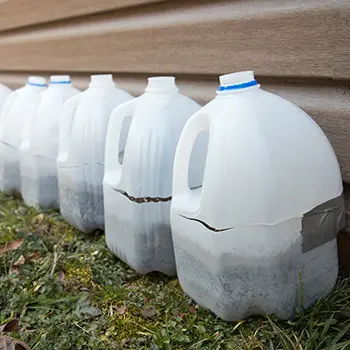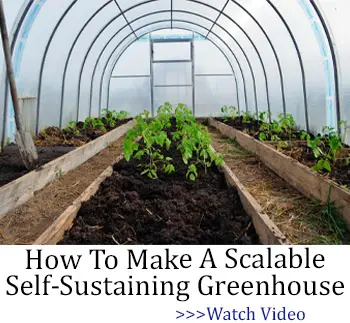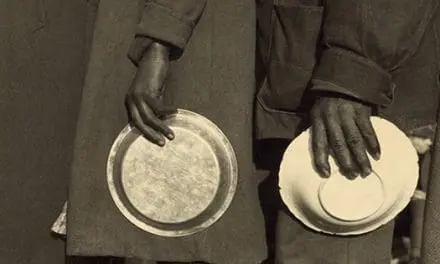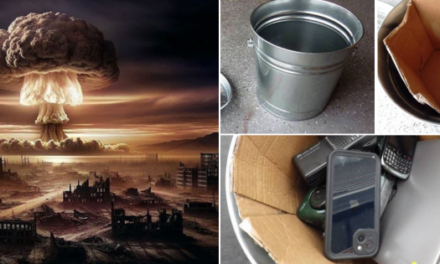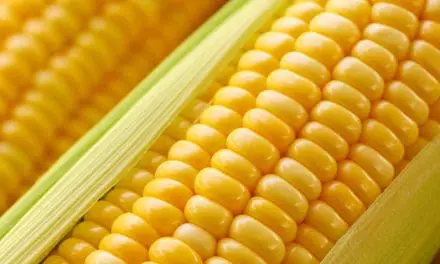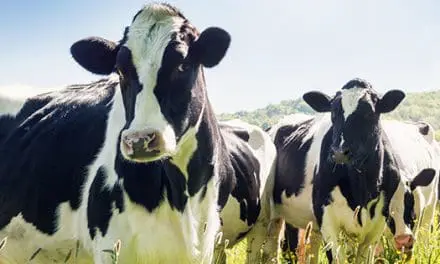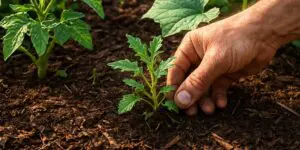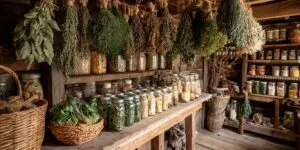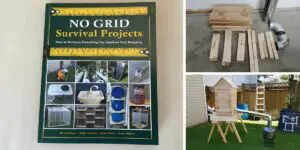Using everyday household items, you can transform your casual gardening into an innovative one through mini-greenhouses. Mini-greenhouses are a practical way to boost your gardening capabilities and planting game. They can help you create a controlled environment for growing your favorite herbs.
Additionally, they provide the required humidity and warmth, along with protecting plants from harsh weather conditions. These simple household items not only reduce waste but also promote sustainable practices. Let’s embrace sustainability while boosting the green thumb.
We all have a lot of unused household items that can be used to make mini-greenhouses. Here are ten items you can use:
Plastic Bottles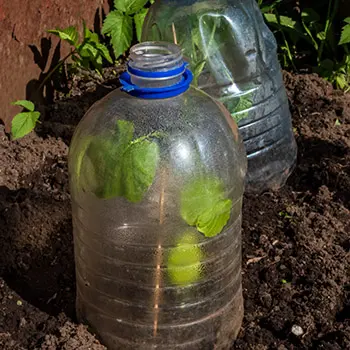
Use plastic bottles to make effective mini-greenhouses as they provide the ideal conditions for germinating plants. They act as a miniature greenhouse and easily trap moisture and warmth, encouraging faster growth.
How to Use: First, cut the bottle from the center in two halves and keep the top half intact to utilize it as a dome. Fill the below part with soil and plant the seeds in the middle of the filling. Close the bottle by placing its top half and secure it with tape if required.
Suitable Plants: They are well-suited for herbs like basil, parsley, and small seedlings.
Related: Do Not Throw Away Your Plastic Bottles, Do This Instead
Clear Storage Bins
This is another ideal household item for supporting plant growth with excellent visibility. You can easily transform a clear storage bin into a mini-greenhouse, creating a comfortable space for your plants. It can serve you best by providing a microclimate with maximum heat and humidity.
How to Use: Simply take a bin, add soil and seeds, and close the lid to maintain warmth and humidity. The only thing you need to do is monitor the moisture level of the bin to maintain some ventilation.
Suitable Plants: Use it to start seeds like peppers and tomatoes because they grow well in humid and warm conditions.
Glass Jars
This economical mini-greenhouse is great for starting small plants and growing herbs. Glass jars will give your backyard a big jump in spring. They perform incredibly well because they warm up and sustain moisture naturally. Thus, don’t waste glass jars; use them to boost your gardening capabilities.
How to Use: Choose the seeds you want to grow in a glass jar. Fill it with soil and add seeds. Close the lid to create a thriving environment for your plants. If you do not have a lid, use plastic wrap (or something else) to cover the jar.
Suitable Plants: You can germinate seeds of cilantro, mint, cucumbers, zucchini, and squash. They all require a cozy space for seedlings and warm temperatures.
Mason Jars
Mason jars not only bring spring to your garden or backyard, but they also add a rustic charm. Using them as effective mini-greenhouses is a versatile option because they make great planters. Interestingly, Mason jars are clear, and you can easily observe the temperature, watering, and plant roots.
How to Use: Take a large wooden box or similar container. Arrange Mason jars inside the box. Fill the soil in it and sow your seeds. Close the lid tightly. Remember, glass jars heat up quickly, so to avoid any drawbacks, slightly open the lids for a few hours daily.
Suitable Plants: It creates an ideal condition for those plants that thrive in humid spaces, such as Ferns, Hypoestes, Pileas, and sprouting Bean seeds.
Egg Cartons
Egg cartons can serve as perfect mini-greenhouses for starting seeds. You can even cut individual parts and plant them separately. Some egg cartons also biodegrade. Plus, they sustain moisture very well.
How to Use: Fill all compartments with soil and plant only one seed in each section. Cover the carton with its lid; if missing, cover it with plastic wrap until the seeds sprout.
Suitable Plants: Egg cartons are perfect for small plants like radishes, lettuce, oregano, thyme, or parsley.
Related: Ingenious Uses for Egg Cartons
Old Umbrella
You can use an old umbrella to shelter your plants from severe weather conditions. Its shape is ideal to allow ample sunlight and provide enough protection. So, you can easily transform an old umbrella into a quirky mini-greenhouse for healthy plant growth.
How to Use: Select a space where you want to plant your seedlings. Then open and place the umbrella upside down. Pick a place with maximum sunlight.
Suitable Plants: Great for plants like cucumbers, zucchini, carrots, brussels sprouts, kale, lettuce, peas, squash, tomatoes, and much more.
Old Windows or Picture Frames
With creativity and innovation, these household items can enhance your garden aesthetics. You can transform them into an elegant mini-greenhouse with little adjustments. Old windows or picture frames perform well in sustaining humidity and heat.
How to Use: Gather and arrange all the items to make your desired structure. You can make a box as well. Assemble the old windows into a picture frame through brackets and hinges. Connect them securely. Now, select a sunny spot to place this structure. Fill it with soil and your favorite seedlings.
Suitable Plants: This handy mini-greenhouse serves best for herbs like thyme, rosemary, cilantro, parsley, and basil.
Fish Tanks
An unused fish tank can be transformed into a beautiful and spacious mini-greenhouse. It provides ample space for seeds to grow, allowing maximum light penetration. It also maintains humidity to keep the process fast and healthy.
How to Use: Simply fill the tank with the accurate amount of soil. Then, plant your seedlings. Cover the tank with a glass piece or any similar lid. It would help to sustain the humidity levels.
Suitable Plants: The fish tank offers enough space for large plants such as squash, bell peppers, etc. So, utilize it for large plants to get a unique setup for gardening.
Related: What Happens When You Bury A Fish Head Under A Tomato Plant
Milk Jugs
Milk jugs and miniature greenhouses work best for the seed-starting method. They effectively germinate seeds and enable them to grow outdoors. They can also offer a warm and moist environment that is healthy for producing stronger plants.
How to Use: There are various creative ways to cut the jug, such as making a scalloped edge or creating small windows for extra light. Choose your favorite method, fill the bottom with soil, and plant your seeds. Cover the jug with the top half and leave the cap open for ventilation.
Suitable plants: This household item is perfect for starting seedlings. You can sow seeds that love humidity, such as kale or cabbage.
Salad Containers
A salad container can be your next easy-to-use item as a mini-greenhouse. It can work like other household items, such as fish tanks, clear storage bins, and glass jars. Its transparent lid can help you examine the seed-growing process, as well as trapping warmth and humidity.
How to Use: As simple as you imagine, just put soil in it and sow your desired seeds. The only things you need to monitor are moisture level and ventilation.
Suitable Plants: You can choose leafy plants such as arugula or spinach, sweet mint, snap peas, strawberries, etc.
The methods of creating mini-greenhouses extend far beyond the traditional techniques. You can use any unused household item that offers space and a suitable environment for seed growth. However, it is crucial to consider your area’s specific environmental and weather conditions.
This is important because the seedling method is different for different weather conditions. By experimenting with the above creative ways with various techniques and materials, you can promote a thriving garden or backyard, even with a small space.
What Every Homesteader Should Grow in His Backyard (Video)
Avoid These 7 Common Greenhouse Gardening Mistakes
Survival Garden: Ingenious Ways To Grow Yours Almost For Free

